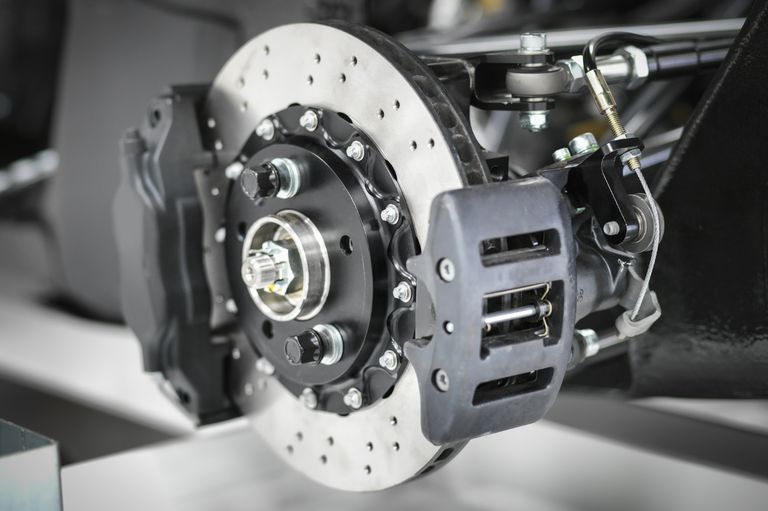Brakes



Disc System
A disc brake system is made up of a rotor which is a circular steel disc that is bolted to the wheel hub that's connected to the wheel and can be slotted or drilled to dissipate heat in high performance systems. The brake pads are dense fibrous components that push against the rotor when hydraulic pressure forces the pistons in the caliper to extend. The caliper holds the brake pads in place near the discs and has hydraulically driven pistons that force the pads against the rotors. Some calipers use a single piston and high performance calipers can have multiple pistons. At the start of the hydraulic process is the master cylinder. The master cylinder converts the mechanical movement of a rod or cable connected to the pedal into hydraulic pressure forced through metal lines or hoses to the caliper.
Drum System
Drum brakes force a curved fibrous pad against a steel wheel drum to slow the car. Just like disc brakes, drum brakes use hydraulic pressure at the wheel cylinder to force the pads outward against the drum.
As the pads slowly wear away, the rivets holding them to its metal backing plate are exposed. When you continue to push on the brake pedal, those rivets dig into the drums. The metal on metal contact gouges the drums and scars its surface. So when it's time to replace the pads, the drums are gouged up and must be machined smooth again (turned).
Having your brake system checked periodically will keep you from damaging your drums, give you peace of mind, and save you money. It's a good idea to have Mobile Mechanic Garden Grove check your brakes whenever you have your oil changed as part of your lubrication system. That way you'll always know if it's time to service them.
